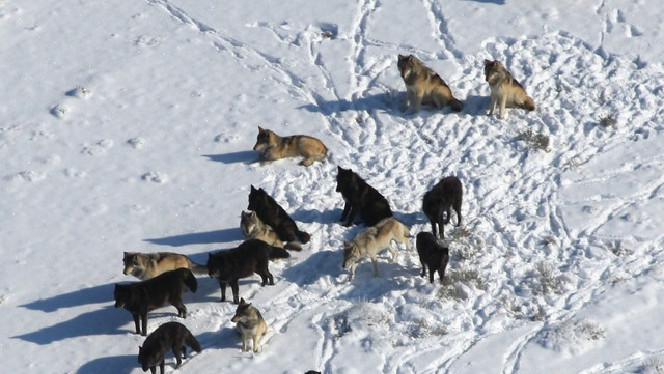Date: Fri, Aug 22, 2014
To: Rick Meril
Have you seen the latest publication by McRoberts and Mech (2014) in The Journal of Wildlife Management that concludes that "data do not support the hypothesis that wolf densities are regulated by social factors"?
Please post the abstract (below) to your blog for interested readers relative to your recent post on "Wolves will kill for more space" study in Yellowstone. I've also attached the entire manuscript. Thank you!
Please post the abstract (below) to your blog for interested readers relative to your recent post on "Wolves will kill for more space" study in Yellowstone. I've also attached the entire manuscript. Thank you!
Shannon Barber-Meyer, PhD
USGS, MN Wolf and Deer Project
FULL PEER REVIEWED ARTICLE BY MCROBERTS AND MECH:
Commentary
Wolf Population Regulation Revisited—Again
RONALD E. MCROBERTS,
U.S. Forest Service, Northern Research Station, 1992 Folwell Ave., 55108, USA
L. DAVID MECH,
1,2
, Northern Prairie Wildlife Research Center, 8711–37th St. SE, 58401, USA
ABSTRACT
The long-accepted conclusion that wolf density is regulated by nutrition was recently challenged, and the conclusion was reached that, at greater levels of prey biomass, social factors such as intraspecific strife and territoriality tend to regulate wolf density. We reanalyzed the data used in that study or 2 reasons: 1) we disputed the use of 2 data points, and 2) because of recognized heteroscedasticity, we used weighted-regression analysis instead of the unweighted regressions used in the original study. We concluded that the data do not support the hypothesis that wolf densities are regulated by social factors.
---------------------------------------------------------------------------------------------------------------------------------------------------------
ARTICLE BY CLICKING ON BOTH LINKS BELOW
http://www.ksl.com/?nid=148&sid=29873051#bswTwvzzjAoUI93l.03
https://www.google.com/url?sa=t&rct=j&q=&esrc=s&source=web&cd=4&cad=rja&uact=8&ved=0CDEQFjAD&url=http%3A%2F%2Fwww.aphis.usda.gov%2Fwildlife_damage%2Fnwrc%2Fpublications%2F11pubs%2Fbreck113.pdf&ei=c93yU4nZHYThoATDmICABg&usg=AFQjCNFWs9217g17h2bWo61ZXBmWBj7Vvg
Wolves will kill for
space, new USU













No comments:
Post a Comment